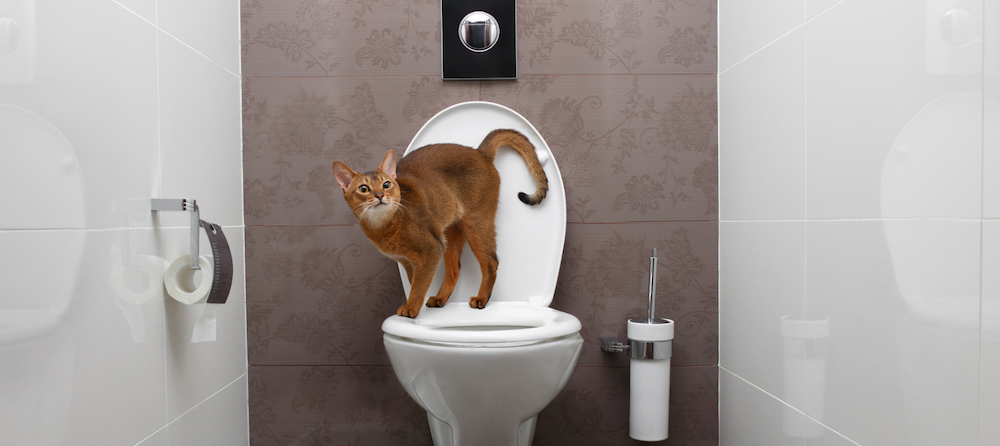Potential Risks of Flushing Cat Poop Down Your Toilet - Advice for Better Handling
Potential Risks of Flushing Cat Poop Down Your Toilet - Advice for Better Handling
Blog Article
We have stumbled on this great article pertaining to How to Dispose of Cat Poop and Litter Without Plastic Bags below on the web and felt it made good sense to talk about it with you here.

Intro
As feline proprietors, it's necessary to bear in mind exactly how we dispose of our feline pals' waste. While it may seem practical to flush cat poop down the toilet, this practice can have detrimental consequences for both the setting and human wellness.
Alternatives to Flushing
The good news is, there are more secure and a lot more responsible ways to take care of pet cat poop. Think about the following choices:
1. Scoop and Dispose in Trash
The most usual technique of getting rid of cat poop is to scoop it right into a biodegradable bag and toss it in the garbage. Make sure to make use of a devoted clutter scoop and throw away the waste promptly.
2. Use Biodegradable Litter
Go with biodegradable feline trash made from products such as corn or wheat. These litters are environmentally friendly and can be safely thrown away in the garbage.
3. Bury in the Yard
If you have a backyard, take into consideration burying cat waste in a marked area away from veggie gardens and water resources. Make sure to dig deep enough to stop contamination of groundwater.
4. Set Up a Pet Waste Disposal System
Invest in a family pet waste disposal system especially developed for pet cat waste. These systems use enzymes to break down the waste, lowering odor and ecological impact.
Health Risks
In addition to environmental concerns, purging cat waste can likewise position health and wellness dangers to people. Feline feces may contain Toxoplasma gondii, a parasite that can cause toxoplasmosis-- a possibly serious health problem, especially for expectant ladies and people with weakened body immune systems.
Ecological Impact
Flushing feline poop presents hazardous virus and bloodsuckers into the water system, posturing a significant danger to water ecological communities. These contaminants can negatively impact marine life and compromise water high quality.
Final thought
Accountable family pet possession prolongs beyond offering food and shelter-- it also involves proper waste management. By avoiding purging feline poop down the toilet and opting for different disposal approaches, we can lessen our environmental impact and secure human health and wellness.
Why Can’t I Flush Cat Poop?
It Spreads a Parasite
Cats are frequently infected with a parasite called toxoplasma gondii. The parasite causes an infection called toxoplasmosis. It is usually harmless to cats. The parasite only uses cat poop as a host for its eggs. Otherwise, the cat’s immune system usually keeps the infection at low enough levels to maintain its own health. But it does not stop the develop of eggs. These eggs are tiny and surprisingly tough. They may survive for a year before they begin to grow. But that’s the problem.
Our wastewater system is not designed to deal with toxoplasmosis eggs. Instead, most eggs will flush from your toilet into sewers and wastewater management plants. After the sewage is treated for many other harmful things in it, it is typically released into local rivers, lakes, or oceans. Here, the toxoplasmosis eggs can find new hosts, including starfish, crabs, otters, and many other wildlife. For many, this is a significant risk to their health. Toxoplasmosis can also end up infecting water sources that are important for agriculture, which means our deer, pigs, and sheep can get infected too.
Is There Risk to Humans?
There can be a risk to human life from flushing cat poop down the toilet. If you do so, the parasites from your cat’s poop can end up in shellfish, game animals, or livestock. If this meat is then served raw or undercooked, the people who eat it can get sick.
In fact, according to the CDC, 40 million people in the United States are infected with toxoplasma gondii. They get it from exposure to infected seafood, or from some kind of cat poop contamination, like drinking from a stream that is contaminated or touching anything that has come into contact with cat poop. That includes just cleaning a cat litter box.
Most people who get infected with these parasites will not develop any symptoms. However, for pregnant women or for those with compromised immune systems, the parasite can cause severe health problems.
How to Handle Cat Poop
The best way to handle cat poop is actually to clean the box more often. The eggs that the parasite sheds will not become active until one to five days after the cat poops. That means that if you clean daily, you’re much less likely to come into direct contact with infectious eggs.
That said, always dispose of cat poop in the garbage and not down the toilet. Wash your hands before and after you clean the litter box, and bring the bag of poop right outside to your garbage bins.
https://trenchlesssolutionsusa.com/why-cant-i-flush-cat-poop/

I am just very serious about How to Dispose of Cat Poop and Litter Without Plastic Bags and I am praying you appreciated the entry. For those who enjoyed our article if you please make sure you remember to pass it around. Many thanks for taking the time to read it.
This Page Report this page